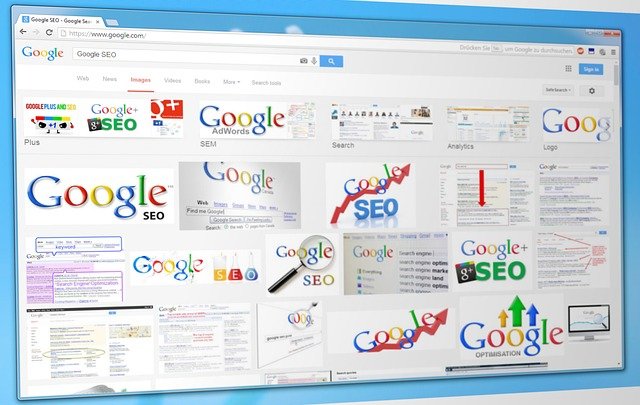If you don’t use image SEO on your website, you’re passing up a huge opportunity to increase traffic and conversions. Image SEO. Thanks to developments in technologies like machine learning, Google’s ability to better interpret and analyze the content of images featured on our websites has increased drastically.
Google is focused on making visual content discovery as simple as possible for its users. This is why you’re seeing improvements in key areas such as an improved image search layout, related keywords at the top, and fewer duplicate images. Nowadays, you can also see badges on recipe images as well as additional information with image captions.
Google Image Search currently ranks second only to normal Google Search in terms of search volume share. It’s no surprise then that photos have become a critical component in improving the SEO of your website.
Let’s take a look at how we can maximize your website’s potential for greater search engine visibility with our complete Image SEO guide.
What exactly is image SEO?
Image SEO is a set of techniques used to improve the ranking of images on a website in image search results and increase user clicks. Image optimization has numerous advantages, including improved user experience, faster page load times, and more ranking opportunities.
And it’s a role that keeps growing in importance.
In one recent study, a comprehensive analysis of 1 million Google queries was used. In terms of search engine rankings, web pages with at least one image beat those without photos, according to the research.
Asking yourself if these tactics will assist your users and/or search engines understand it better is a smart way to think about effective image SEO. You’ll see that this principle holds practically every time throughout this guide.
The benefits of using visual content and image SEO
- You’ve probably heard the expression “images speak louder than words.” They can also help you (the writer) explain a concept or make a point more effectively.
- Using images is a great way to make your content stand out and capture the attention of your audience. It’s been proven that using engaging graphics can persuade visitors to read your content. According to some studies, content with relevant images receives 94% more views than content without.
- Using images in your content helps attract the attention of your audience. Using images can also help your SEO by sending the appropriate signals to search engines about what your content is about.
- Users are more likely to share pages with images on social media platforms. As a result, those shared posts are more likely than plain text posts to garner social media attention. According to a Buffer study, tweets with photographs received 150 percent more retweets and 18% more clicks.
- Ranking high for images that you use throughout your site can help you increase traffic and brand popularity.
Choosing the best images for a better user experience
Including images in your website content is an excellent way to enhance the user experience. They can improve the visual appeal of your page and present information that text cannot convey. Images, when used correctly, will increase your reader’s engagement.
Using images simply to have them there, on the other hand, can have unintended consequences. Instead of engaging your users, the wrong image may turn them off and cause them to leave.
Not only that, but images can have an impact on page load times. Waiting for an irrelevant image to load will only help to increase your bounce rate.
Here are some basic ground rules to follow when selecting images for your website.
Easy Image SEO tips you need to know
-
- Avoid using stock photography: As tempting as it can be to easily download high-quality, royalty-free images from sites like Pixabay, Unsplash, and Pexels, you should use these sparingly. Better yet, avoid them altogether.
Search engines can perform image searches, which is why images can help improve your site’s visibility. However, search engines can also distinguish between unique visual content and stock images.
Using unique, high-quality images throughout your website helps your content stand out to both your customers and search engines.
- Make sure to use responsive images: The best way to ensure that your images display properly across all devices and screen sizes is to use responsive images. Responsive images are determined by their size about other items on the page. This ensures that images are presented on a scale that is appropriate for the type of display being used.
A slightly more technical approach would entail providing the browser with a list of image URLs via the srcset attribute instead of a single image URL in the src attribute. When done correctly, you may rest assured that your browser will always use the correct image size.
- Compress your images: You can reduce the file size even after you’ve resized the image to the proper dimensions. Large image sizes can cause websites to load slowly. This can hurt the user’s experience and search engine rankings.
Compressing an image properly entails playing a balancing act between file size and image quality. Compress it too much and you will get a smaller file size, however, the image quality may take a big hit.
Using a low compression rate, on the other hand, can result in a very high-quality image. That being said, you will have to cope with a massive image size problem.
Experiment with different file types and compression rates until you discover the ideal combination for each image. For saving your files, several picture-editing programs, such as Adobe Photoshop, provide web-friendly image options.
- The right way to use Alt Text: The alt text (or alt tag) describes the visual content to users. This is useful when the images are having trouble loading or cannot be seen.
When you hover your cursor over a picture, most current browsers will display the text filled out on these alt tags. You can change what text messages appear by modifying the Alt Text box behind the scenes.
Keep in mind that your alt text can be read aloud by screen readers and appear in searches in addition to functioning as a placeholder. As a result, make sure they’re short, to the point, and use keywords whenever possible.
- Use an SEO-friendly name on your images: The majority of mobile phone images have file names like IMG 987654 or DSC000456. Yes, we understand how time-consuming renaming files can be. This is especially true if you can’t wait to post the photos on your website for everybody to see.
However, you’d be missing out on an excellent opportunity to provide context about your image to search engines. You’re also missing out on telling Google about your page.
Furthermore, you don’t want to use any old name for your photographs. Image names should be applied in a sensible way that explains what the image is about.
If you manage a local bike shop online, you’re probably going to have a lot of images of mountain bikes. Instead of calling them mountain-bike-1 and mountain-bike-2, give them names that are more descriptive and keyword-rich.
- Include Structured Data (Image Schema): Schema markups help in providing useful information about your website to search engines. Moreover, schema helps make your page more appealing, engaging, and informative in SERPs by incorporating snippets and images.
Schema markup is a set of semantic elements (or microdata) that you may include in your HTML. In the case of images, you can use structured data markup to implement the image schema on your pages.
- Use Open Graph meta tags: Open Graph is a protocol developed by Facebook that is conceptually similar to schema markup. They are snippets of code that affect how URLs are presented on social media sites. When you have multiple images on a page, you may use the og:image tags to inform Facebook which one to use.
Open graph meta tags can help crawlers figure out what portions of your content are essential and what they mean.
Using Open graph tags provides you more control over which picture is used when your image is shared or liked. Despite the fact that they were developed by Facebook, Open graph tag changes will also appear on other social media sites such as LinkedIn and Twitter.
-
Add a caption to your image: According to research, captions beneath images are read 300 percent more than the body content. Without a doubt, not using captions or using them incorrectly can cost you valuable ways to interact with your audience.
You should only include captions when it makes sense for the visitor to do so. Consider the visitor first, and don’t add a caption solely for the sake of image SEO.
- Avoid using stock photography: As tempting as it can be to easily download high-quality, royalty-free images from sites like Pixabay, Unsplash, and Pexels, you should use these sparingly. Better yet, avoid them altogether.
The bottom line on Image SEO
Overall, optimizing your images increases the likelihood of your website rising to the top of search engine rankings. So, by including images, you can add a little more interest and color to your website.
It’s crucial to remember that image optimization isn’t rocket science. It has, however, become a necessary component of any effective SEO campaign. So, before you start uploading your image to your website, be sure to read over the image SEO suggestions listed above.
Need help ranking your website? Take a look at our affordable SEO services and get in touch today, we’d be honored to partner with you!






